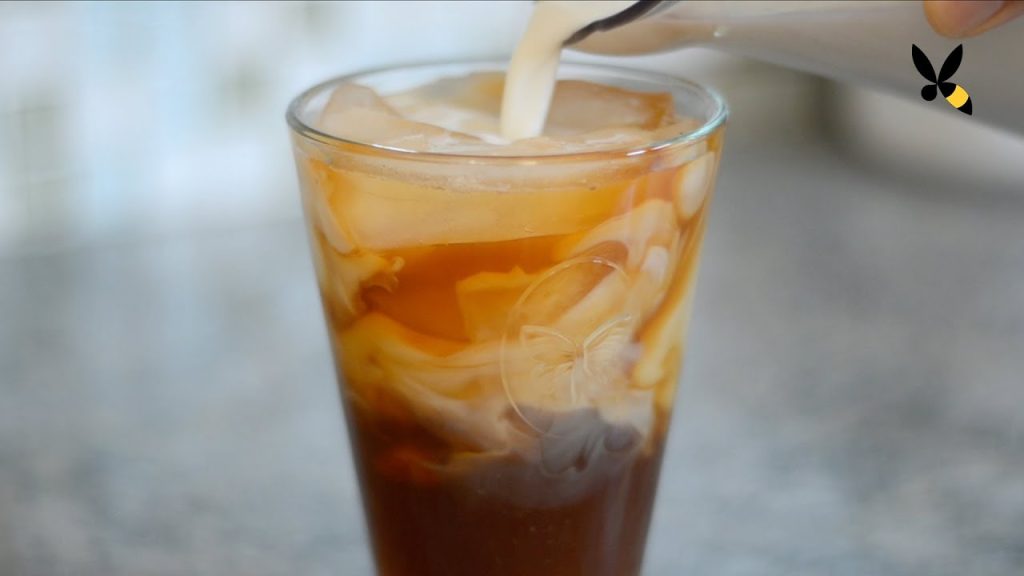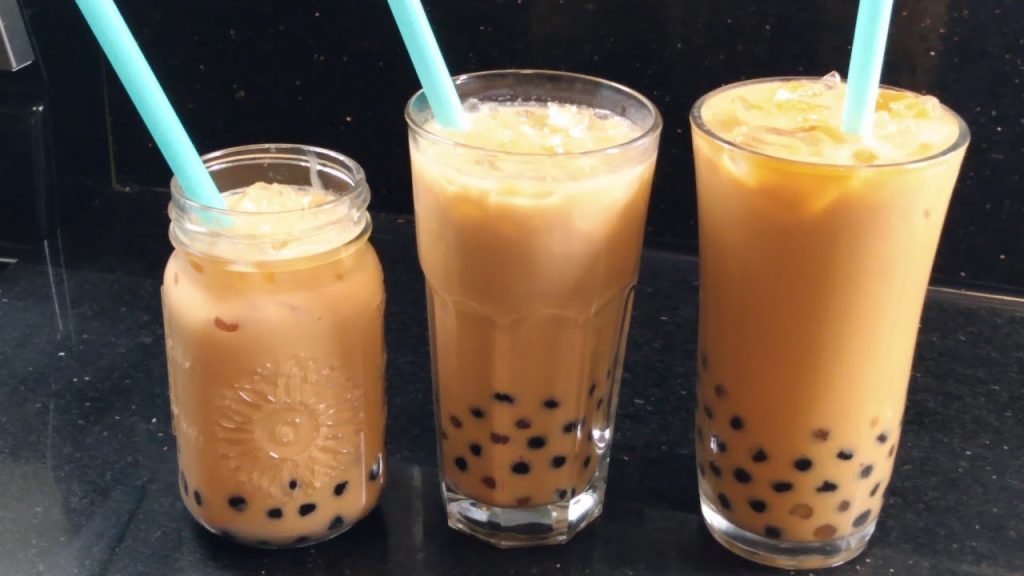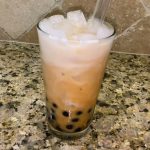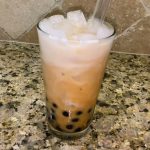Are you a fan of the delicious and refreshing Thai tea with boba? Well, you’re not alone. This popular drink has gained massive popularity all over the world for its unique combination of bold flavors and chewy texture. However, as much as we love indulging in this sweet treat, many of us are curious about its calorie count. Whether you’re watching your weight or just want to be more mindful of what you consume, understanding the calories in your favorite drinks is essential. In this blog post, we will dive into every aspect of Thai tea with boba calories – from its components to potential variations in nutrition – so that you can make an informed decision before ordering your next cup.
What Is Thai Tea?
Before we jump into the calorie count, let’s first understand what Thai tea is. This popular drink originated in Thailand and is made using black tea leaves, spices like star anise and tamarind, and condensed milk. It has a vibrant orange color due to the addition of food coloring or turmeric powder. The result is a sweet and creamy beverage with hints of spice, making it a perfect choice for those who have a sweet tooth.
What Are Boba Pearls?
Boba pearls, also known as tapioca pearls, are small chewy balls made from tapioca starch and brown sugar. They are typically added to milk teas and give the drink its signature texture and fun factor with every sip. However, boba pearls are not just for show – they also add calories to your drink.
History Of Thai Tea Boba
In the late ’80s, a brilliant idea took root in Taiwan. Combining three popular treats—tapioca balls, shaved ice, and milk tea—a new and exciting beverage was born. With tapioca balls as the base, shaved ice in the middle, and creamy milk tea on top, this drink quickly gained fame.
See more : Discover How Much Caffeine is in Thai Iced Tea? A Quick Guide
The term “boba” is actually Taiwanese slang for breasts and it refers to the round shape of the tapioca balls. The name is believed to have originated from Chinese characters.
As boba’s popularity grew, inventiveness flourished in Taiwan. Stalls began offering fruit boba, using fruit powders and syrups as a more affordable alternative to real fruit. Toppings expanded beyond tapioca balls to include a variety of delicious elements like grass jelly, almond jelly, egg pudding, and red beans. And as for the classic boba, milk was replaced with non-dairy creamer, resulting in an incredibly sweet and creamy taste.
Thai Tea Boba Nutrition
The answer depends on several factors, such as the drink’s size, ingredients used, and preparation method. For example, using real milk instead of non-dairy creamer can significantly increase the calorie count. Similarly, adding extra toppings like grass jelly or egg pudding will also add up to the overall calorie count. The tapioca pearls themselves are high in carbohydrates and sugar, contributing to the drink’s overall calorie content.
Thai Tea With Boba Calories

| Nutrition Facts | |
|---|---|
| For a Serving Size of 1 serving | |
| Calories 250 | Calories from Fat 60.3 (24.1%) |
| % Daily Value * | |
| Total Fat 6.7g | – |
| Sodium 0mg | 0% |
| Carbohydrates 46g | – |
| Net carbs 46g | – |
| Sugar 0g | – |
| Fiber 0g | 0% |
| Protein 2.3g | |
On average, a 16-ounce cup of Thai tea with boba contains around 350-400 calories. However, this number can vary depending on the shop and the ingredients used. For example, using whole milk instead of non-dairy creamer can add an additional 50-60 calories to your drink. Similarly, if you opt for extra toppings like grass jelly or egg pudding, you can expect an extra 50-100 calories.
Thai Tea Health Benefits
While Thai tea with boba may not be the healthiest drink option due to its high calorie and sugar content, there are still some potential benefits to enjoy. For one, black tea is known for its antioxidant properties that can help fight inflammation and improve heart health. Additionally, this beverage contains calcium from the milk or non-dairy creamer used, which is essential for strong bones and teeth. However, these benefits may be overshadowed by the high calorie count, so it’s important to consume this drink in moderation.
Potential Downsides Of Thai Tea

See more : Does Thai Tea Have Caffeine? What You Need to Know?
While there are plenty of healthy perks to sipping on this refreshing beverage, it’s important to note that Thai tea does contain caffeine. So, if you’re trying to steer clear of caffeinated drinks for heart-related reasons or any other concerns, it might be best to skip the Thai tea.
How To Make Thai Tea Boba?
If you’re looking to indulge in Thai tea with boba while keeping the calorie count low, why not try making it at home? You can control the ingredients and customize it to your liking. Here’s a simple recipe for Thai tea with boba:
Ingredients:
- 1 cup of strongly brewed black tea
- 1/4 cup of condensed milk
- 1/4 cup of non-dairy creamer or whole milk
- 1/4 cup of cooked boba pearls
- Ice cubes
Instructions:
- Brew a cup of black tea and let it cool.
- In a tall glass, add ice cubes, brewed tea, condensed milk, and non-dairy creamer (or whole milk).
- Stir well until all the ingredients are combined.
- Add cooked boba pearls on top and enjoy!
Making Thai tea with boba at home not only allows you to control the calorie content but also gives you room for experimentation. You can use healthier alternatives like almond milk or coconut milk, or even skip the condensed milk altogether for a lighter version.

Ronald B Gamrot is the owner of Silverking Brewery, one of the most successful craft breweries in North America. He started the business from scratch in his garage, and it has since grown into a multimillion-dollar operation. Ronald is passionate about brewing delicious beer and providing top-notch customer service. He is a respected member of the brewing community and often speaks at industry events.



